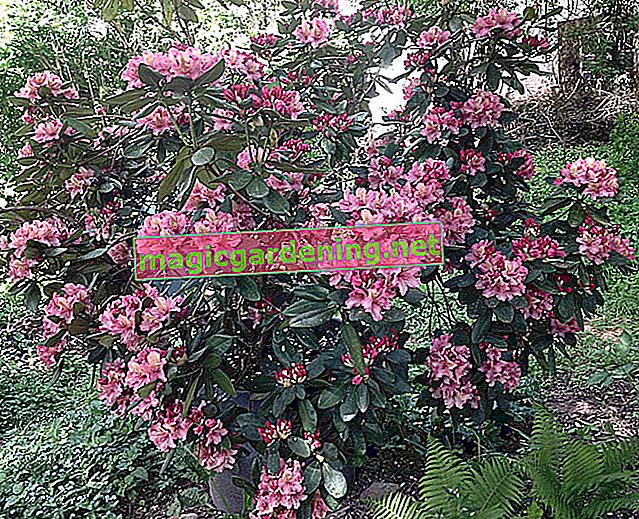
Here are the four most important rhododendron fertilizers
- Mineral fertilizer Blaukorn Entec
- Organic complete fertilizer
- Horn shavings
- Cattle manure
First test then fertilize
Before fertilizing, first test the pH value of the soil using universal indicator paper. This prevents over-fertilization and you know whether more or less rhododendron fertilizer is needed.
also read
- Rhododendron earth is not just rhododendron earth
- A lush rhododendron on the garden shed
- Rhododendron doesn't bloom! Just why?
Mineral fertilizer or organic fertilizer?
As shallow roots, rhododendrons cannot use nutrients from deeper soil layers. If they are to bloom profusely, they must be properly nourished. The combination of mineral fertilizers such as Blaukorn Entec and an organic fertilizer has proven to be very effective. The blue grain works for two to three months. The amount depends on the size of the plant. In addition to the complete fertilizer, loosely distribute the same amount of coarse horn shavings (€ 6.39 at Amazon *) under the plants. The coarser the horn chips, the longer they work. Also add kieserite to ensure the magnesium supply. Since rhododendrons are very sensitive to salt, fertilizers containing chloride should be avoided or rarely used. Well-rotted cattle manure is suitable for fertilizing older rhododendrons. (17,80 € at Amazon *) Young rhododendrons under one meter cannot stand it. Since rainwater washes out the cattle manure quickly, you shouldn't do without the mineral fertilizer.
Artificial fertilizer blue grain - use and dosage
When using blue grain in the garden, care must be taken not to overfertilize the rhododendron. Distribute blue grain in small pinches under the ornamental shrub on the ground, as the nutrients and salts concentrate in the soil area. Use blue grain as a fertilizer during the growth and vegetation phase in spring. In the growth phase, the plants convert the minerals faster and utilize them more quickly. Water plants well so that the salts dissolve and are transported via the roots. Or put the blue grain globules directly into the watering water. An amount of 5 grams per 10 liters of water is sufficient for fertilization in the growth phase. Do not treat young plants with blue grain. The tender roots are quickly attacked and the plants perish.
Rhododendron substrate
This special soil with a low pH value is specially tailored to the needs of popular bog plants such as rhododendrons. Enriched with fertilizer, it supplies the plants with nutrients for up to three months. Including additional iron for green, robust leaves and more flowers. Place the plant in the center of the planting hole. Make sure that the roots can spread. Fill the planting hole with rhododendron substrate. Now pound the earth and water - done.
Tips & Tricks
Use organic fertilizers in the garden whenever possible. This means that you only recycle the nutrients that are already in the nutrient cycle. Only use mineral fertilizers if your rhododendron is suffering from an acute nutritional deficiency and needs more care. When fertilizing, it is important to adhere to the exact quantities given by the manufacturer, which can vary.








